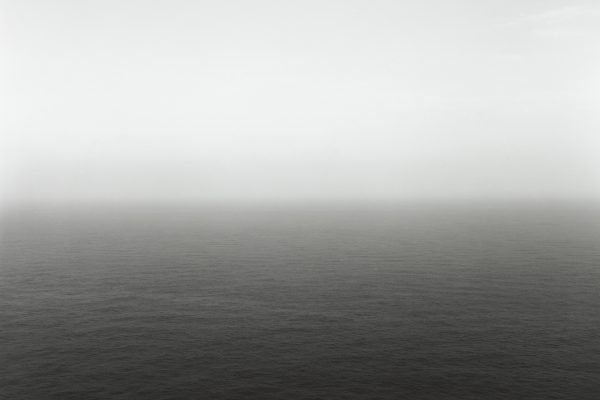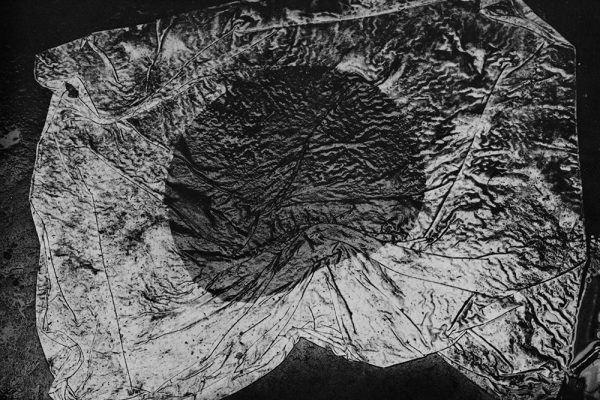It’s not the first time that I am mentioning Rinko Kawauchi in my blog, but this has a special reason.
I think it was 2003 when Markus Schaden, my local photobook dealer showed me a small photobook by a Japanese women photographer whom I had not heard of at that time. It was “Utatane” (Siesta) by Rinko Kawauchi. “Utatane” caught my attention immediately, since her photography was so much different to any photographer of her generation.”Utatane” is included in vol. 2 of “The Photobook: A History” by Martin Parr and Gerry Badger. See my previous post.
Rinko Kawauchi had her first exhibition at the end 1990s only a few years after a new – not to say the first – generation of women photographer had emerged in Japan. Before the mid-1990s, the Japanese photography scene was completely male dominated, but this changed almost over night when the first onna no ko shashinka (girly photographers) entered the scene. Those onna no ko shashinka mostly did a kind of subjective documentary photography influenced by Nan Goldin and Nobuyoshi Araki. These women, amongst them most famous Hiromix and Yurie Nagashima, talked mainly about their own lives. With their spontaneous and direct and dairy like style the young photographers opened a new narrative in the Japanese photography, but soon they reached their own limitations, because of their self centred approach on reality.
The photography I saw in Rinko Kawauchi’s book “Utatane” was different. It is much more open in terms of content and visual grammar. Her photography is more poetic in the way she depicts the (daily) live. It is personal in the way she describes the particular in the normal course of life, but her topics are universal at the same time. Rinko Kawauchi talks about live and death, the senses and the fluidity of reality. And sometimes, like in the book “Cui Cui” which observes the lives of her grandparents over a period of thirteen years, she mixes traditional documentary photography with her more personal and poetic approach on reality.
Rinko Kawauchi’s work focuses on ordinary things and everyday situations. Her photographs attain their specific quality through her use of cropping and choice of perspective as well as the subtle use of natural light in combination with often virtually transparent colours. Rinko Kawauchi works in series, which, in the form of open narratives, combine poetry and emotion with representations of mortality and occasional melancholy.
In the same year, 2003, I visited a small exhibition of Rinko Kawauchi’s in work in an off gallery in Berlin and a year later I saw her presentation at the “Rencontres de la Photography” in Arles where Martin Parr, as the head curator, put Rinko Kawauchi in the centre of the festival. In Arles took the chance for a longer talk with Rinko about her photographic work. 2004 I went to see her exhibition at the Fondation Cartier in Paris. In my opinion, this was an absolutely superb and persuasive show, with the large walls devoted to her opus magnum “Aila”, with “the eyes, the ears” in a small cubicle in the centre and with “Cui Cui” presented as a slide show.
The subject of Rinko Kawauchi’s best-known work “Aila” (which means “family” in Turkish) is the depiction of the essence of life: animals, plants and people are shown in a sequence assembled by free association, which also includes both birth and death. Rinko Kawauchi’s fascination in fleeting beauty, the subjects of creation and destruction, and life and death are communicated in her images. “From the black ocean comes the appearance of light and waves. It helps you imagine birth. I want imagination in the photographs I take. It’s like a prologue. You wonder, ‘What’s going on?’ You feel something is going to happen.” (Rinko Kawauchi)
Since I work with Galerie Priska Pasquer, a gallery which has Japanese photographers in its program, it suggested itself to propose Rinko’s photography to the gallery.
After showing her work at last years Paris Photo fair, upcoming Friday Galerie Priska Pasquer will open an exhibition of Rinko Kawauchi’s photographs, and Martin Parr will do an introductory speech at the vernissage. The exhibition shows mainly works from the series “Aila”, “the eyes, the ears” and “Utatane”.
22 September – 22 December
Private view:
Friday, 22 September 2006,
6pm – 10pm, with an introductory speech by Martin Parr at 8pm
Matinee: Sunday, 1 October 2006, 11am – 4pm,
with a talk by Ferdinand Brueggemann at 12pm:
“Rinko Kawauchi and Contemporary Japanese Photography”
Biographical Summary:
Rinko Kawauchi was born in Shiga in 1972 and became interested in photography while she was studying at Seian Junior College of Art and Design. As is customary with Japanese photographers she began her career as an artist by publishing her work in her own photography books. In the year 2001 she became famous over night in Japan after the simultaneous publication of the three photography books “Hanako” (named after a disabled girl), “Utatane” (siesta) and “Hanabi” (fireworks). In 2002 she received the prestigious “Kimura Idea Award” for two of the books. In 2004 she published “Aila” (family), in 2005 “the eyes, the ears” (a book about the senses) and “Cui Cui” (which observes the lives of her grandparents over a period of thirteen years). Further publications by Rinko Kawauchi, which should be mentioned, are the photography books “Every day as a child” accompanying the film “Nobody Knows” by director Kore-Eda, as well as “No War”, a collaboration with Yoshitomo Nara about Afghanistan and her recently published diary “Rinko Nikki.” To date Rinko Kawauchi has published nine photography books.
[All quotes: Galerie Priska Pasquer]
———
Recommended books:
Rinko Kawauchi: “Aila”
Rinko Kawauchi: “Utatane”
Rinko Kawauchi: “Hanabi”
Rinko Kawauchi: “The eyes, the ears”
Rinko Kawauchi: “Cui Cui”
Rinko Kawauchi: “Every day as a child” (photobook to the movie “Nowbody Knows”)
Rinko Kawauchi, Yoshitomo Nara: “no war”, Foil magazine, vol. 1, Jan. 2003







First of all thank you for a fantastic site!!
I am wondering, who do you see as the upcomming female names in Japan right now.
Is there a new trend at the moment which has taken over from the girlish photographers ?
Is the subject here ” photography as an art ” or women who snap pictures
with the mechanics of the camera ? If indeed a most mundane snap shot
of watermelon and watermelon seeds can be hailed as some sort of photographic
achievement then photography is what Picasso called it ‘”the art form of the
second rate ” . Rather than worry over which sex is advancing in the world of
Japanese photography ,let’s find the creative ones who have something to
say as artists ,of whatever sex .
to ARIEL,
free your mind and open your heart please and dont just look with your brain!
[…] Also check out Ferdinand Brueggemann’s excellent post on Kawauchi (and Japanese photography in general here) […]
[…] are some interviews with her over here and here. Images from her book Aila can be found here. Japan-Photo.info also wrote an excellent post on her. More images can be seen here […]
i would like to see some pictures of the type of crowd gate used in the dairys from differant angles if it would not inconvenience you please e-mail them to me at if you have any if not i m out of luck but thank you
if you have any if not i m out of luck but thank you
Hello!
Can Rinko Kawauchi be contacted somehow? Do you have an e-mail, site or post address of hers? I am interested to know and change some lines with her. I am preparing a new series of my former project “Pepeni spar?i /Smashed Watermelons” and think she could be interested in collaborating.
Thank you,
Bogdan Teodorescu

http://www.sibiote.blogspot.com
Hi Bogdan,
you can contact Rinko Kawauchi via her publisher: http://www.foiltokyo.com
Ferdinand
Thank you Ferdinand!
This is very kind of you! I will soon write her/them.
Bye,
Bogdan.